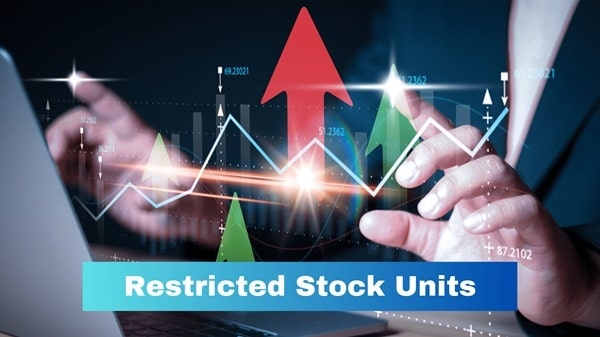| Persisting inflation and global uncertainty are reshaping investment strategies in 2025. Indian investors are increasingly moving beyond traditional equity-heavy approaches to gold, REITs, real estate, and commodities, building inflation-resilient portfolios. Structured research and asset diversification are emerging as the key to preserving real purchasing power. |
As inflation redefines investment priorities, Indian investors are re-evaluating conventional portfolio strategies. In 2025, there is a clear move towards multi-asset diversification that includes not just equities and bonds, but also inflation-sensitive assets like gold, real estate, REITs, and commodities.
This shift reflects a broader understanding: building portfolios that aim to preserve purchasing power over time requires alignment with evolving macroeconomic conditions. Asset classes react differently under inflation, and a structured approach, grounded in sectoral research and allocation discipline, is vital for building lasting real value.

Streetgains, a SEBI-registered research analyst firm, offers a research-led framework for this kind of diversification. Its inflation-proof portfolio strategy demonstrates how multi-asset allocation can be used to preserve purchasing power during economic shifts.
Understanding Inflation’s Impact on Portfolio Value
Inflation erodes the real value of money and can significantly undermine fixed returns. Traditional savings or bond-heavy portfolios often fall short of matching inflation, especially when real interest rates turn negative. Therefore, investors need assets that either appreciate with inflation or offer returns that outpace it.
Some effects to account for include:
- Decline in bond purchasing power: Fixed coupons lose value as inflation rises.
- Volatility in equity valuations: Higher input costs and interest rates compress earnings and valuations.
- Currency depreciation: Global inflation can weaken the rupee, affecting imported goods and capital costs.
A sound inflation-proof strategy requires assessing not just returns, but how each asset behaves under inflationary pressure. This understanding informs allocation decisions that balance growth and capital preservation.
Strategic Asset Selection: Building an Inflation-Resilient Mix
To hedge against inflation while pursuing real growth, investors need a multi-asset strategy combining both traditional and inflation-sensitive instruments. Key allocations may include:
- Gold and sovereign gold bonds: Historically, gold has acted as a hedge during inflation spikes and currency devaluation. In India, sovereign gold bonds offer the added benefit of 2.5% annual interest over price appreciation.
- REITs and real estate: Commercial real estate-backed investments often provide rental yields that rise with inflation. REITs offer exposure to property markets without large capital outlays or liquidity constraints.
- Commodities and thematic ETFs: Industrial metals, energy-linked instruments, and commodity ETFs tend to perform well during supply-side inflation. They can also diversify sectoral risks.
- Inflation-resistant equities: Stocks in sectors like FMCG, energy, and banking can preserve margins by passing input costs to consumers. These sectors typically offer stable earnings during inflationary regimes.
Streetgains’ research models evaluate how each of these categories responds to economic indicators, allowing investors to calibrate their exposure based on current macro trends.
Portfolio Construction Principles: Balancing Growth with Inflation Protection
Building an inflation-resilient portfolio is not only about asset inclusion but also about allocation strategy. A well-structured mix reduces concentration risk while allowing for responsive rebalancing. Key principles include:
- Core-satellite allocation: The core of the portfolio may include inflation-hedged assets such as sovereign gold bonds or REITs. The satellite portion can focus on higher-growth sectors like infrastructure or energy.
- Diversification across asset classes: Combining equities, debt, commodities, and real assets smooths returns across inflation cycles. For instance, equity returns might falter during high inflation, but commodity holdings may offset the drawdown.
- Tactical adjustments: Adjust exposure based on CPI trends, interest rate changes, and currency movements. For example, rising inflation with weakening INR may favour increasing gold and export-oriented equity weights.
- Periodic reviews: Semi-annual or quarterly reviews aligned with economic updates help fine-tune allocations. Tools like the inflation index, purchasing manager indices, and fiscal policy announcements guide timely shifts.
Streetgains supports this framework with structured insights that track macro trends, sector rotations, and asset-class correlations to optimise inflation protection and portfolio resilience.
Behavioural Anchors for Inflation Discipline
Staying disciplined during inflation spikes is critical. Short-term volatility can lead to irrational decisions. Investors can counter this by:
- Following defined entry and exit plans
- Prioritising capital preservation over chasing returns
- Relying on regular, research-backed updates to stay course-corrected
These behavioural guardrails, backed by Streetgains’ structured insights, help investors act on data, not emotion.
Outlook 2025: Building Real-Value Portfolios with Research-Backed Precision
In 2025, preserving purchasing power is no longer optional; it’s central to every investment strategy. Indian investors are shifting from chasing nominal returns to building portfolios that endure economic shifts and deliver real-value growth.
Integrating inflation-aware strategies, such as gold, REITs, and sector-led equities, helps strike a balance between protection and performance.
Streetgains supports this approach with SEBI-compliant, research-driven insights tailored to macroeconomic trends. Its credits-based subscription structure aligns with investor interests, offering actionable intelligence built on sector outlooks and technical indicators.
In an era of uncertainty, investment success depends on discipline, process and adaptive strategy, not prediction.
Disclaimer: This document is intended for educational and informational purposes and does not constitute investment advice. Investment in the securities market is subject to market risks. Read all related documents carefully.

